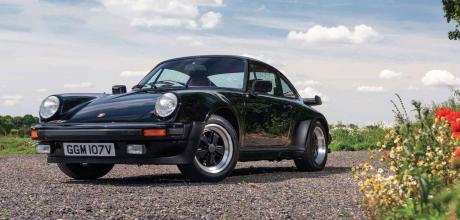1975 Porsche 911 Turbo 930 with rock and roll history
We get behind the wheel of Baddie, one of the most original 930s around. It also happens to be a classic 911 Turbo with a serious hard-rocking past…
Words Steve Bennett
Photography Dan Sherwood
HAMMER OF THE GODS
A Porsche 911 Turbo 930 with rock and roll history.
You will have noticed this issue of 911 & Porsche World is dedicated to sixty years of 911. Clearly, it would be remiss of us not to include the mighty 911 Turbo. And what better way to celebrate this groundbreaking Porsche than with a drive in an original 930. The thing is, though, this particular 930 is much more than just another 911 Turbo.

It should be noted, we don’t always go a bundle on celeb-owned Porsches, 930 or otherwise. Even so, it’s true to say air-cooled 911s have proved consistently popular with pop and rock groups over the years. As a case in point, I once saw the Bros bros, Matt and Luke Goss, cruising in identical Guards Red 911 Turbos through London. There are others, too. The boys from Spandau Ballet?
Check. Cliff Richard? Check. As regular readers will know, we recently featured the impressive collection of old and new Porsches owned by Def Leppard guitarist, Vivian Campbell. Heavy metal glamsters, Judas Priest, even recorded a tribute to the classic 911 on their 1986 album, Turbo. The song is named Turbo Lover and was co-written by the band’s guitarists, Glenn Tipton and KK Downing, whose inspiration came from the 930 SEs each bought after a tour of the Porsche factory in Zuffenhausen.
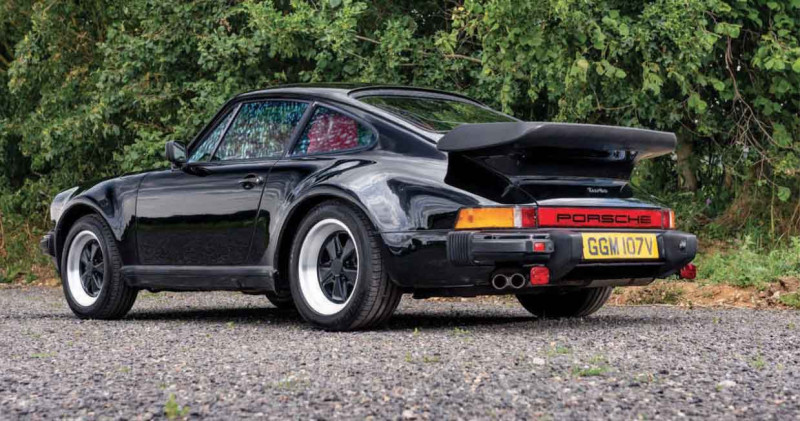
I’m your turbo lover. Tell me there’s no other. I’m your turbo lover. Better run for cover. So sang the group’s vocalist, Rob Halford. Profound.
As you will have undoubtedly gathered, the 911 Turbo on these pages has a connection to the pop and rock world. No, it’s not Cliff’s car. The link transcends the music of the world’s mightiest rock band, Led Zeppelin, who were driven hard by their larger-than-life manager, Peter Grant. This was his 911 Turbo, bought during the group’s dying days in 1980 and fittingly ordered in black.
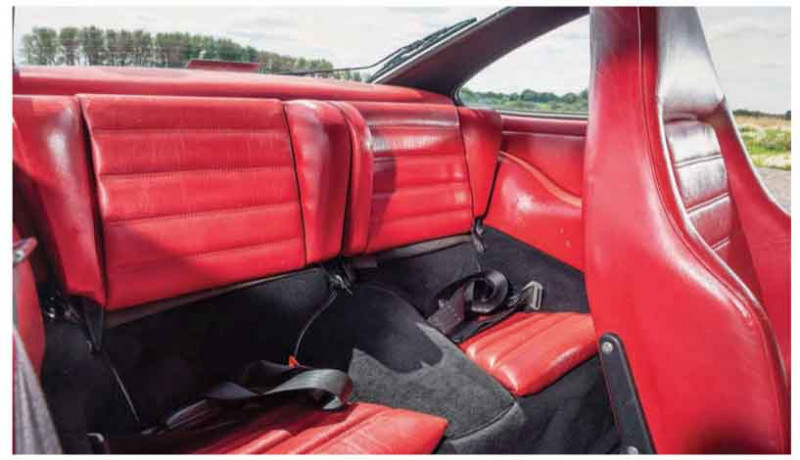
Okay, I admit. I’m a big Led Zeppelin fan. For some, Grant won’t be as important as the band’s four members, but know this: Grant was the fifth member of Led Zeppelin, from the group’s creation in 1968 to their demise in 1980 following the death of powerhouse drummer, John Bonham. As I’m sure you can imagine, a band like Led Zeppelin must have taken some controlling, but Grant was very much up to the job. A bear of a man with a chilling sense of menace, he stood well over six feet tall and weighed in at 300lbs, which was handy for his pre-rock management days employed as a wrestler and bouncer in London’s Soho district.

Before Led Zeppelin, he worked with the equally fearsome Don Arden (father of Sharon Osbourne) and served as tour manager for Eddie Cochran, Gene Vincent and The Yardbirds. Arden’s managerial techniques included debt collectors with machetes and dangling hapless promoters by the ankles from balconies. All fair game and not a problem for Grant. What he detested, however, was the way Arden treated his charges. When The Yardbirds morphed into Led Zeppelin, Grant followed the band and used his full repertoire of size, muscle and ruthless acumen to get the best deals from both record companies and promoters.
Indeed, Grant is widely recognised as single-handedly transforming the exploitative music industry to get much fairer deals for musicians, who he felt “held the power” and therefore deserved the rewards.
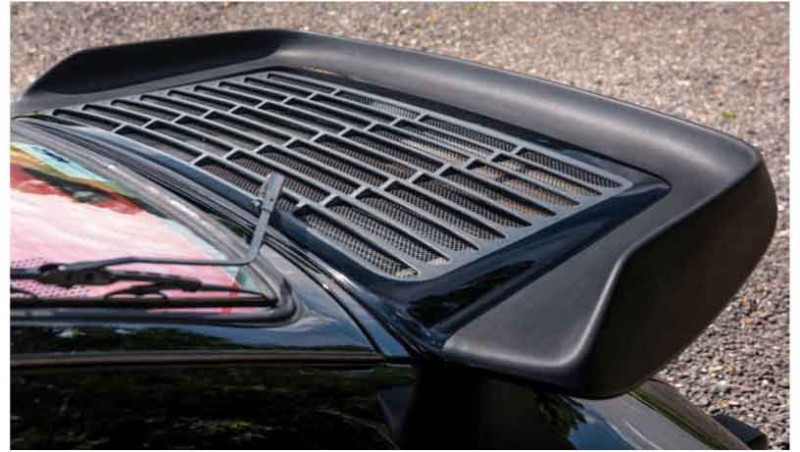
Not every band had a Peter Grant, but his iron-fist style and fiercely protective stance allowed Led Zeppelin to get on with the job of world domination through very loud music, epic albums and arena tours. Grant collected the spoils and distributed accordingly. To this day, the surviving members of Led Zeppelin are permanent residents of rock’s rich list. At his peak, Grant, too, was one of the wealthiest players in the music industry.
With him at the wheel, nothing rivalled the size and power of the Led Zeppelin juggernaut. He rocked an imposing pirate-style look, with a mandarin’s moustache, antique rings, silk scarves and a bottle of Jack Daniels always to hand. He was as rock and roll as Robert Plant, Jimmy Page, John Paul Jones and John Bonham. With this image in mind, imagine Grant at the wheel of this 911 Turbo, which use to wear the number plate, BAD 1, a gift from the members of Bad Company, another band on the Grant roster.
In terms of rock and roll excess, Grant had the Full English: cocaine addiction, marital problems and diabetes, but by 1980, and with Zeppelin’s demise, he virtually retired from the music business, becoming a reclusive figure at his estate in East Sussex, where he worked hard to conquer his demons and lose half his bulk. Perhaps the 911 Turbo was reward or compensation for a life now in the past? Whatever, Grant kept the Porsche for the rest of his life, which ended as a consequence of a fatal heart attack in 1995. He was sixty years old.
This 930 cuts a fascinating aside to the Led Zeppelin story and comes with serious provenance. Grant bought the car brand-new via Duncan Hamilton & Co Ltd, another well-known name in the world of Porsche. Despite only covering six thousand miles during its first fifteen years on the road, there is plenty of history to accompany the vehicle, including hand-written documentation from Grant on headed paper. In the latter part of his life, he became an enthusiastic and very active member of Porsche Club Great Britain. It might seem hard to believe, but after his hell-raising past, he attended numerous club events, happily displaying Baddie, as the car was affectionately known.
SWITCH IDENTITIES
After Grant’s death, the Porsche was inherited by his son, Warren. It wore the BAD 1 number plate until 1998, when it was replaced with GGM 107V and was re-offered for sale through Duncan Hamilton. The odometer now read nine thousand miles. The history file contains the original full-page colour advert produced by Duncan Hamilton and published in the classic car press of the day. The sale price was £31,950.
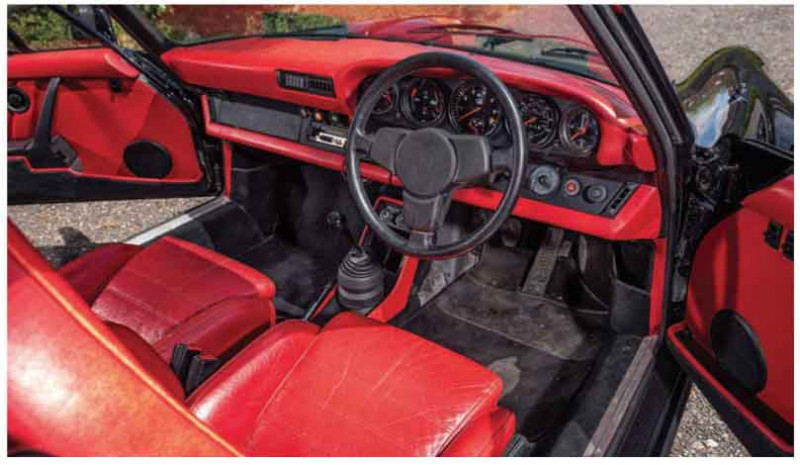
Remarkably and significantly, this special 930’s mileage remains low to this day – Baddie has covered little more than eleven thousand miles and is largely untouched by time, save for bouts of recommissioning at the request of the handful of successive owners, all keen to preserve originality.
All of this leads us to the car’s current custodian, Jon Gale, who bought Baddie through the highly anticipated Silverstone Auctions sale held at the NEC Classic Car Show in November 2022. Gale is a massive Led Zeppelin fan, then? Well, no, not really. He bought the black beauty based on its condition, low mileage and originality. He is candid enough to admit the mighty Led Zep and its force-of-nature manager rather passed him by. For him, the car is very much the star, which is how it should be.
The Porsche’s provenance and history are, however, a pleasant bonus. And he agrees, they’re very much part of this 911 Turbo’s identity.
Going a step further, Gale doesn’t mind admitting the ex-Grant machine didn’t register on his radar when he set out to buy a 911 Turbo. His attention focused on a white 930, which turned out to be not quite the car he was expecting. Subsequently, Baddie entered the bidding equation, the hammer falling at £145,000, which seems entirely realistic for a 911 Turbo of such originality, irrespective of its rock and roll past.
This is Jon’s first classic Porsche. He plans to use it, too. “I’m sick to death of buying cars I can’t use,” he tells me. “Drive around in a Viper Green GT3 RS and, frankly, everyone hates you. By contrast, drive a classic 911 Turbo and people can’t get enough.” Part of his ‘just use it’ mantra involved a more thorough recommissioning than had been carried out under the previous owner’s rule. He asked Porsche indie, PIE Performance, to carry out the work. It is our pals at PIE who have given us the nod to Ramble On over to the company’s Suffolk base and grab a drive in this automotive icon.
Sensitive to its near unicorn status – by this, I’m referring to the car’s originality – PIE’s technicians overhauled the engine, turbocharger and gearbox using new seals and gaskets, but retained the original mechanical components, which, at just eleven thousand miles, were virtually new. PIE also overhauled the braking system, rebuilding the calipers and replacing the drilled discs. The wiring loom had also suffered the ravages of time and was therefore treated to a good going over.
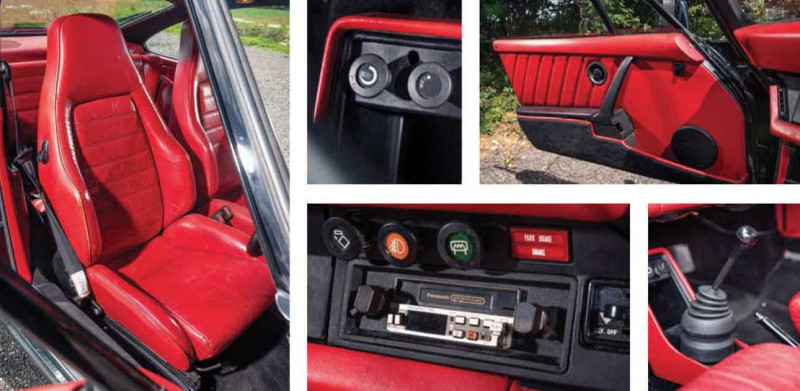
The paint and bodywork is all original, as is the eye-popping red leather interior, which wears it age, patina and history as a badge of honour. The equally bright dash top has warped and part-faded through exposure to direct sunlight, but this adds to the sense of history. After all, a car is only original once. Talking of which, the only aftermarket addition to the car is its fantastically retro Panasonic “digital seeking” radio cassette player, complete with green LCD display. Equally fantastically, the unit still works. Kind of.
The 930 didn’t change much during its fifteen-year time in production, but this being a 1980 example means it benefits from the full 300bhp from 3.3 litres over the 1974 original’s 260bhp and three litres. And, because we’re celebrating sixty years of the 911, it is appropriate for us briefly delve into 930’s origins and its significance in the 911 timeline. For this, we have to thank motorsport and the now almost forgotten process of homologation, whereby a manufacture wanting to race a modified version of a production car was required to build a limited number of road-legal examples of the competition machine for customer consumption. Think 911 S/T as an early example of the homologation process.
The RS 2.7 is, perhaps, the ultimate. Porsche wanted to use knowledge gained from developing and campaigning its 917 K Can-Am monster to enhance the 911 for Group 4 endurance racing. Simple enough, right? Build four hundred road-going examples of the race car, job done. Following this train of thought, the 911 Turbo could have been a strippedout, lightweight homologation special, but Porsche’s then top man, Ernst Fuhrmann, had the imagination to see beyond this basic remit. Fuhrmann believed the resulting force-fed 911 should be a fully productionised, rangetopping machine mixing performance with luxury. Many of his colleagues preferred the stripped-out homologation route, but Fuhrmann won the argument. In that moment, a new supercar world order arrived.
It was by far the harder development path. After all, car buyers are far more prepared to accept homologation compromises in exchange for motorsport kudos and driving thrills. Porsche could have easily got away with building a less civilised 911 Turbo. It could, in fact, have built a more powerful 911 Turbo.
Crucial to the success of the 930 — and its drivability — was the installation of the turbocharger. Lag was the enemy, but by combining a Kühnle, Kopp & Kausch (KKK) turbocharger with a Bosch K-Jetronic fuel injection system, plus Bosch’s solid state, breakerless electronic ignition and a clever close-looped control network incorporating a race-derived blow-off valve venting back into the turbo system (rather than noisily back into the atmosphere), Porsche had done everything it could with the technology available. With boost pressure of 0.8bar, the turbocharger started spinning at 1,500rpm, producing a useful kick at 2,500rpm. Peak torque came at 4,000rpm and peak power at a relaxed 5,500rpm.
Not being awash with development budget, Porsche pragmatically used a four-speed version of the Type 915 gearbox, rather than modify the five-speed to handle the increase in torque.
Strengthening the unit would have meant increasing the size of the transmission housing to accommodate the tougher gears. Better to stick to four speeds and build a bulletproof gearbox suiting both road and track aspirations. Trouble is, with just four gears came wide ratios, but we’ll come to this in a moment.
For all its range-topping and luxury, the 911 Turbo was pumped up for a reason. It was more a question of substance over style to homologate the bulging arches, deep front spoiler and, of course, the massive rear wing. Compared to Italian rivals, the 930 looked and meant business. The 911 Turbo also chewed ‘em up and spat ‘em out in real-world driving conditions.
Time for a drive. Time also to sit in the seat of rock royalty. For a Led Zeppelin fanboy like me, this is quite a moment. Hell, it could be the most rock and roll thing I’ve ever done! The ignition key dangles from its Duncan Hamilton keyring. A quick flick and the 3.3-litre flat six churns and grumbles into life. It doesn’t have the screeching vocal pitch of Robert Plant, but it certainly has the rumble and chugging drive of John Bonham. Out of curiosity, I fire up the Panasonic head unit. It seems to be locked to medium wave and is picking up a Dutch radio station. It’s not playing Led Zeppelin, but the music I hear is something very much of the era, which is symbolic enough.
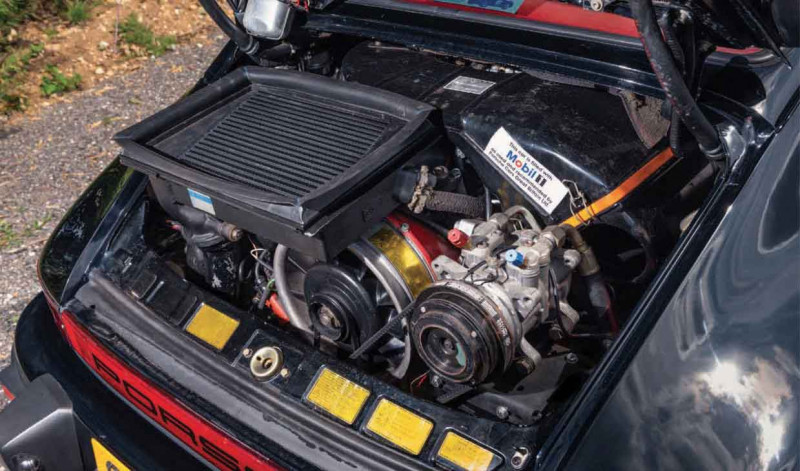
This isn’t my first 911 Turbo rodeo. I’ve driven many 930s, from one of the very first 1975 UK cars to the very last 1989 machines. For all the supposed shock and awe, these cars really are quite benign. Or should I say ‘deceptive’? Driven normally, the four-speed gearbox dominates just as much as the engine. This is to say you have to get your head around the fact first is good for nearly 50mph, while second will surge to 80mph. Third will take you all the way to 130mph. Fourth is almost an overdrive.
The near 300bhp peak arrives at 5,500rpm, while torque – a solid wall of the stuff – is 304lb-ft at 4,000rpm. While there’s fuel-injected tractability below these figures, this is where you need to be to really wake the Turbo from slumber. It comes on song with a hardened, heavy metal edge, delivering a wallop feeling fast even by today’s standards.
Out here in the Suffolk sticks, near PIE headquarters, second and third are the choice ratios for keeping the turbocharger spinning. The 915 transmission is a good ‘un, too. Long throw, but sweet with it. And what forty-three years ago seemed to be unfeasibly wide and extravagantly booted, is now wieldy and snake hipped, slipping agilely along, guided by light-touch steering, perfect vision through the upright screen and using the tops of the front wings to navigate the perfect apex. It’s stress free, almost relaxing. The effort required to keep up in one of the era’s Italian sports cars would be comical.
Reluctantly, I hand this Turbo back to the team at PIE Performance. Jon Gale is a lucky man – this is a special 911 Turbo, and not just because of its hard-rocking credentials. This is undoubtedly one of the best, most original and largely unrestored 930s around. It’s a pity the car no longer carries its BAD 1 number plate, but the fact it remains with the Grant family is entirely understandable. Clearly, there can only ever be one Baddie. And there will only ever be one Peter Grant.
YOU HAVE TO GET YOUR HEAD AROUND THE FACT FIRST IS GOOD FOR NEARLY 50MPH, WHILE SECOND WILL SURGE TO 80MPH
Above You’re never gonna fit a Marshall stack in that, mate.
Above In the years leading up to his death, Grant became a regular at Porsche Club Great Britain events, as this letter to club registrar, Fred Hampton, shows.
Below and right Jon Gale plans to put the car to good use, admitting he was attracted to its overall condition and low mileage, rather than its provenan.
CAR BUYERS ARE FAR MORE PREPARED TO ACCEPT HOMOLOGATION COMPROMISES IN EXCHANGE FOR MOTORSPORT KUDOS
Above BAD 1 wasn’t the only car in Grant’s possession with a registration plate highlighting his profession as a manager of rock bands — his Range Rover wore LZ 1, a nod to Led Zeppelin
THIS 911 TURBO CUTS A FASCINATING ASIDE TO THE LED ZEPPELIN STORY AND COMES WITH SERIOUS PROVENANCE
Above and below Interior is a feast for the eyes and features a retro aftermarket Panasonic cassette player and radio.
Above Turbocharged flat-six is in excellent order on account of covering little more than eleven thousand miles from new.


